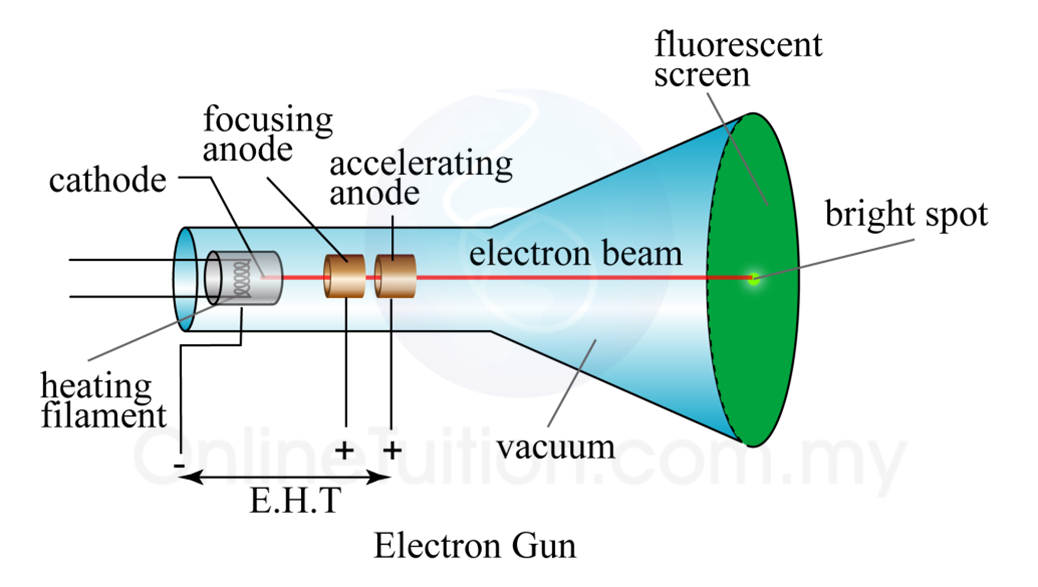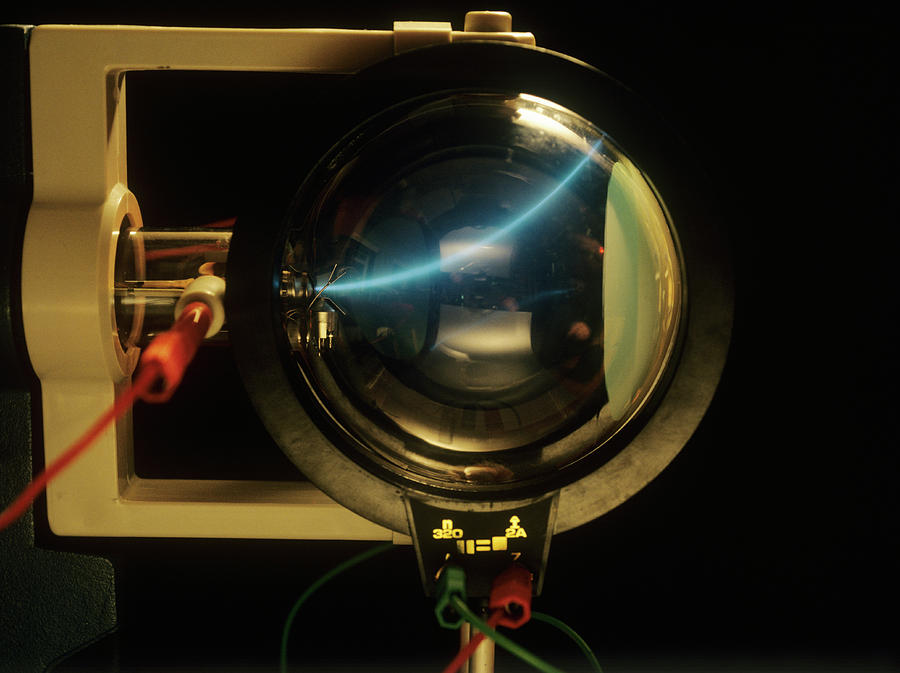
Several problems had to be overcome when designing the tubes. For therapy, less penetrating X-rays were desired. For diagnostic imaging, more penetrating X-rays were preferred. The higher the applied voltage, the higher the energy of the X-rays, and the more penetrating they became.

The greater the current (on the order of a milliamp) supplied by the operator to the tube, the greater the intensity of the emitted X-rays. When the electrons struck the target, X-rays were emitted. If the tube had no anticathode, the anode almost always served as the target. If the tube had an anticathode, it was the target. When a sufficient electric potential (high voltage) is applied across the tube's electrodes, a stream of electrons (aka cathode rays) travels through the gas from the cathode to the target. Tubes with both an anode and anticathode were often referred to as bi-anode tubes. It was not unusual for X-ray tubes to have three electrodes: a negatively charged cathode, a positively charged anode, and what was known as an "anticathode." The latter (aka auxiliary anode) was usually given a positive charge, but it sometimes had no electrical charge at all. The configuration of these tubes varied, but there were always at least two electrodes (an anode and a cathode) that might, or might not, be located at opposite ends of tube. Tubes designed for X-ray work usually contained air, although some (e.g., Snook tube) employed helium or hydrogen. Depending on the type of tube, the residual gas might or might not be air. What these different tubes had in common was the fact that they were made of glass and were partially evacuated. But at the time they were being manufactured, they were simply known as X-ray tubes. Today, gas discharge X-ray tubes are commonly referred to as “cold cathode” tubes in order to distinguish them from “hot cathode” Coolidge X-ray tubes that employ a heated filament. After the discovery, new types were developed that were specially designed to produce X-rays. Shop here and c hoose the energy-efficient, long-lasting shape which best meet your unique lighting needs.Prior to Roentgen’s discovery of X-rays in 1895, many different types of gas discharge tubes were already in use (e.g., Geissler, Crookes, Hittorf, Lenard tubes). On such systems, small amounts of electricity continuously enter the bulbs, even when turned off, diminishing the life of a Cold Cathode or CFL. And finally, Cold Cathode and CFLs do not work well if used with timers, motion detectors, or photo sensors are used. Cold Cathodes tend to cost more than CFL for comparable uses. Compare that to the range of a traditional CFL – Upwards past 150 watts comparable incandescent and over 2850 initial lumens. Occasionally, you might see one brigher, up to 60 or 75 watts.) Initial lumens range from 100 to 300. What are the disadvantages of Cold Cathode Fluorescent Light Bulbs? Cold Cathodes are restricted in light output, reaching only up to 40 watts comparable incandescent. The extended life reduces the maintenance cost and hassle of replacing the lamps.


That is over 15,000 hours longer than most CFLs. And, Cold Cathodes last for approximately 25,000 hours of use.

They are available in all common shapes, including a-lamps, flame tips, torpedo, G20 globes, G25 globes, G30 globes, R20 floodlights, R30 floodlights, and flat pars.ĭimmable down to 5% of total light output, Cold Cathodes provide more flexibility than CFLs. What are the advantages of Cold Cathode Fluorescent Light Bulbs? Cold Cathodes are ideal for use in theaters, amusement parks, marquees, flashing signs, chandeliers, decorative applications, sanctuaries, down lighting and track lights. Cold cathodes use more robust solid metal stubs which max out at 200 degrees Fahrenheit – hence the relatively “cold” cathode. In traditional CFLs, the cathodes incorporate thin tungsten wires which can reach upwards to 900 degrees Fahrenheit. The current then reacts with mercury and phosphors to generate ultraviolet light. So what is a Cold Cathode Fluorescent Light Bulb? CCFL, like their cousins Compact Fluorescent Lamps (CFL), use small, integrated ballasts to regulate electric current into a glass tube. Cold Cathode Fluorescent Lamps (CCFL), for instance, are especially useful where dimming, rapid on/off (for signs), or long lamp life is required. Tags: CCFL, CFL, cold cathode light bulbs, compact fluorescent light bulbsĪ light bulb is a light bulb is a light bulb – right? Wrong! There are certain types of light bulbs (or lamps as they are known in the lighting industry) which meet specific needs. What is a Cold Cathode Light Bulb? DecemPosted by bowmanlamps in Cold Cathode.


 0 kommentar(er)
0 kommentar(er)
